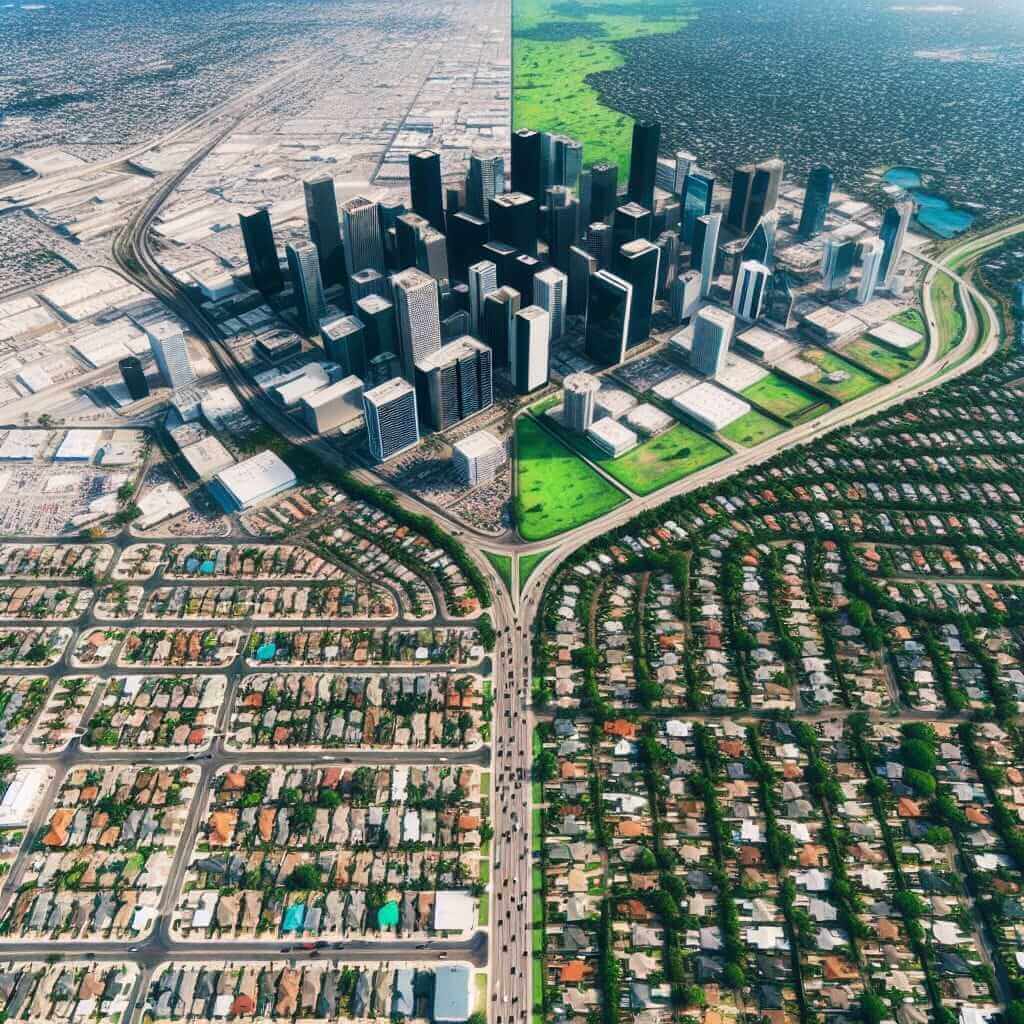Urban sprawl, the uncontrolled expansion of cities into surrounding rural areas, is a pressing issue with significant environmental ramifications. This essay will delve into the detrimental impact of urban sprawl on the environment and explore potential solutions to mitigate these problems.
Nội dung bài viết
IELTS Writing Task 2 Sample Questions
Here are some potential IELTS Writing Task 2 questions related to urban sprawl:
- Many people are concerned about the environmental impact of urban sprawl. What are the causes of this problem, and what measures can be taken to address it?
- Discuss the negative effects of urban sprawl on the environment and propose solutions to mitigate these issues.
- To what extent do you agree that the benefits of urban sprawl outweigh its drawbacks for the environment?
Sample Essay:
Many people are concerned about the environmental impact of urban sprawl. What are the causes of this problem, and what measures can be taken to address it?
Urban sprawl, characterized by the rapid and often unplanned expansion of cities into surrounding rural areas, has emerged as a pressing environmental concern in recent decades. This essay will delve into the primary causes of urban sprawl and explore potential measures to mitigate its detrimental effects on the environment.
One of the primary drivers of urban sprawl is the increasing affordability of personal vehicles. As cars become more accessible, people are less inclined to live in densely populated urban centers and instead opt for larger, more affordable homes in suburban areas. This outward migration leads to increased traffic congestion, air pollution, and the destruction of natural habitats. Furthermore, the rising demand for single-family homes contributes to the fragmentation of ecosystems, isolating plant and animal populations and disrupting natural processes.
 Aerial View of Urban Sprawl
Aerial View of Urban Sprawl
Another significant contributor to urban sprawl is the lack of effective urban planning and development regulations. Without comprehensive zoning laws and incentives for sustainable development, cities often expand in a haphazard and uncontrolled manner. This can lead to inefficient land use, increased infrastructure costs, and a greater reliance on private vehicles. Moreover, the absence of mixed-use zoning can result in the segregation of residential, commercial, and industrial areas, further exacerbating traffic congestion and pollution.
Addressing the multifaceted challenge of urban sprawl necessitates a multi-pronged approach. Governments and urban planners must prioritize sustainable transportation options, such as public transit, cycling infrastructure, and pedestrian-friendly streets. This will not only reduce traffic congestion and air pollution but also promote healthier lifestyles and more livable urban environments. Additionally, implementing stricter zoning laws that encourage compact, mixed-use development can help curb the outward expansion of cities and preserve valuable green spaces.
In conclusion, urban sprawl, driven by factors such as car dependency and inadequate urban planning, poses a significant threat to the environment. By promoting sustainable transportation, implementing effective land-use regulations, and fostering a greater appreciation for compact urban living, we can mitigate the negative impacts of urban sprawl and create more sustainable and resilient cities for the future.
(Word count: 322 words)
Writing Tips
- Clearly define urban sprawl and its impact on the environment in the introduction.
- Use topic sentences to introduce the main idea of each paragraph.
- Provide specific examples to support your arguments.
- Use a variety of vocabulary related to urban development and the environment.
- Maintain a formal and academic tone throughout the essay.
Useful Vocabulary
- Urban sprawl (noun) /ˈɜːbən sprɔːl/: the uncontrolled expansion of urban areas.
- Habitat fragmentation (noun) /ˈhæbɪtæt ˌfræɡmənˈteɪʃən/: the process of breaking up large habitats into smaller, isolated patches.
- Zoning laws (noun) /ˈzoʊnɪŋ lɔːz/: regulations that dictate how land can be used in specific areas.
- Mixed-use development (noun) /ˌmɪkst ˈjuːs dɪˈvɛləpmənt/: a type of urban development that combines residential, commercial, and industrial uses in the same area.
- Sustainable transportation (noun) /səˈsteɪnəbl ˌtrænspɔːrˈteɪʃən/: modes of transportation that have minimal impact on the environment.
Conclusion
This guide has provided a comprehensive overview of how to approach an IELTS Writing Task 2 essay on the impact of urban sprawl on the environment. Remember to use specific examples, relevant vocabulary, and a clear structure to effectively convey your arguments. With practice and careful planning, you can achieve a high score on this challenging topic. Other related issues include the impact of urban sprawl on social equity, the economy, and public health.


